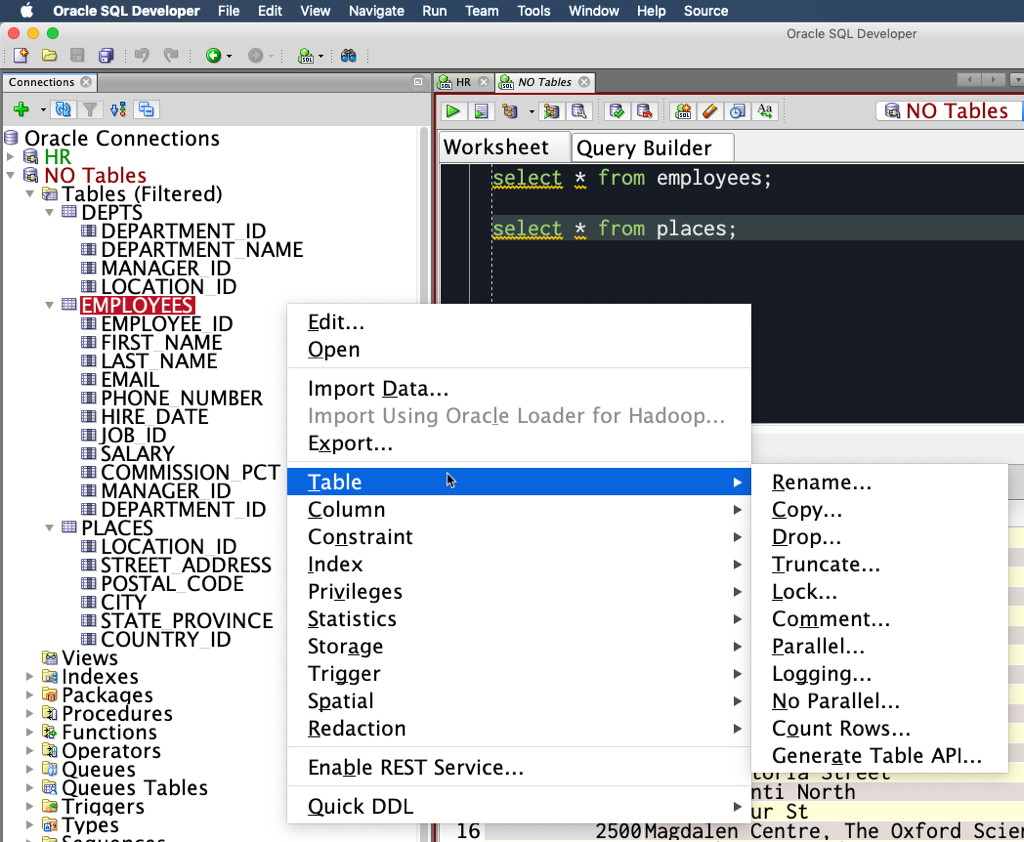
In the Oracle APEX Sign In page, enter your new password.Ĭongratulations! You have successfully created your APEX workspace.Open the email and click on the Create Workspace button.Check your email for a message from you have not received an email within 5 minutes, check your spam folder.Follow the instructions in the wizard to request your workspace.The following statement creates a view named employee_yos based on the employees table.Here are step-by-step instructions your students can follow to sign up for their own workspaces. See the following employees table from the sample database.

Let’s look at some examples of creating new views based on the tables in the sample database.

The WITH CHECK OPTION clause protects the view from any changes to the underlying table that would produce rows which are not included in the defining query. The WITH READ ONLY clause prevents the underlying tables from changes through the view. The defining query is a SELECT statement that defines the columns and rows of the view.

Typically, the column names of a view derived from the select list of the defining query. In these cases, you can use the FORCE option. However, sometimes, you may want to create a view based on the tables that you will create later or the tables that you don’t have sufficient privileges to access at the time of creating the view. Usually, you create a new view based on existing tables. To avoid this, you can use the CREATE OR REPLACE clause that preserves the view privileges. Because when you use the DROP VIEW and CREATE VIEW to change the view’s definition, Oracle removes the view privileges, which may not be what you want. It is handy if you have granted various privileges on the view. The OR REPLACE option replaces the definition of existing view. CREATE VIEW view_name ASĬode language: SQL (Structured Query Language) ( sql ) OR REPLACE


 0 kommentar(er)
0 kommentar(er)
